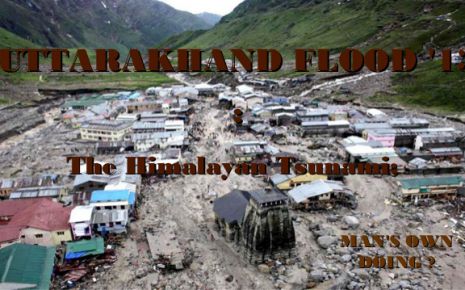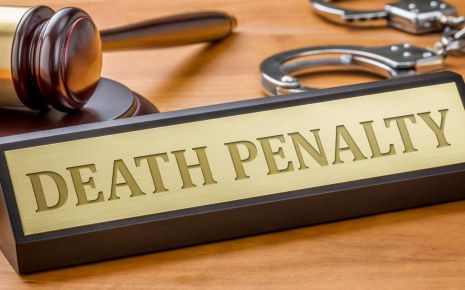Ozone Depletion In International Trends
So, mainly the Earth's atmosphere has divided into five main layers based
on their temperature and composition:
UV radiation from the sun can cause a range of health and environmental Problems including, skin cancer, cataracts, and damage to plant and animal life. However, the ozone layer absorbs most of this radiation before it reaches the Earth's surfaces acting as a Protective shield.
The ozone layer's Located in the Stratosphere, which is the layer of the Earth's atmosphere that lies between approximately 15-50 km above the Earth's surface.
This happens when the chlorine and bromine atoms in the atmosphere come in contact with ozone and destroy the ozone molecule one chlorine can destroy 100,000 molecules of ozone. It is destroyed more quickly than it is created.
On May 16th, 1985 three British Antarctic Survey scientists � Brian Gardiner, Joe Farman and Jonathan Shanklin introduced the world to something new which they suggested was 'unanticipated and large decreases in stratospheric ozone levels over the Antarctic stations of Halley and Faraday'.
It came to be known as the Antarctic ozone hole, and further research revealed the human made chemical Particularly CFCs, were responsible for the depletion of the ozone layer.
In 1981, UNEP's Governing council authorized UNEP to draft a Global framework convention on stratospheric ozone protection.
The Montreal Amendment (1997)
The Beijing Amendment (1999)
Timeline
There have been several important International case Laws and Judgements related to ozone depletion, which have helped shape International trends and Policies
Conclusion
In conclusion, ozone depletion has been a significant environmental issue over the past few decades, and its preservation is crucial for a healthy and sustainable planet. International efforts to address ozone depletion have been successful, particularly through the Montreal Protocol on Substances that Deplete the Ozone Layer, which has led to a gradual reduction in the production and use of ozone-depleting substances. This has resulted in a gradual recovery of the ozone layer, particularly in the polar regions.
However, continued efforts are needed to ensure the protection of the ozone layer for future generations. The phase-out of ozone-depleting substances must continue, and alternative technologies and products that do not contribute to ozone depletion should be developed and promoted. International cooperation and collaboration are crucial in addressing this global environmental issue and ensuring a healthy and sustainable future for all.
Written By: Manmeet Singh, Central University of Kashmir BA LLB
- Troposphere
- Stratosphere
- Mesosphere
- Thermosphere and,
- Exosphere
Stratosphere:
Stratosphere is the Layer of the atmosphere above from the earth's surface which exist approximately 15-50 km. It contains 90% of the ozone layer, which helps protect the earth from harm ultra violet radiation from the sun.Now, What Is Ozone Layer?
The Ozone Layer is a thin layer of gas in the Earth's upper atmosphere that protects the earth from the harmful effects of the sun's ultra violet radiation. The ozone layer is Primarily made up of ozone molecules, which are made up of three atoms (O�).UV radiation from the sun can cause a range of health and environmental Problems including, skin cancer, cataracts, and damage to plant and animal life. However, the ozone layer absorbs most of this radiation before it reaches the Earth's surfaces acting as a Protective shield.
The ozone layer's Located in the Stratosphere, which is the layer of the Earth's atmosphere that lies between approximately 15-50 km above the Earth's surface.
What Is Ozone Depletion?
Ozone depletion is the gradual thinning of the earth's ozone layer in the upper atmosphere Caused due to the release of certain chemical, including [CFCs] which were commonly used in refrigerator,air conditioning, and aerosol product.This happens when the chlorine and bromine atoms in the atmosphere come in contact with ozone and destroy the ozone molecule one chlorine can destroy 100,000 molecules of ozone. It is destroyed more quickly than it is created.
Origin Of Ozone Depletion?
The origin of ozone depletion can be traced back to the discovery of (CFCs) in the 1930s. CFCs are chemically stable, which means they remain in the atmosphere for a longtime after they are released. When are CFCs are exposed to ultra violet radiation in the upper atmosphere, they break down and release chlorine atoms.. These chlorine atoms then react with ozone molecules, breaking them down into oxygen molecules and Leading to the depletion of the ozone layer.On May 16th, 1985 three British Antarctic Survey scientists � Brian Gardiner, Joe Farman and Jonathan Shanklin introduced the world to something new which they suggested was 'unanticipated and large decreases in stratospheric ozone levels over the Antarctic stations of Halley and Faraday'.
It came to be known as the Antarctic ozone hole, and further research revealed the human made chemical Particularly CFCs, were responsible for the depletion of the ozone layer.
International Efforts To Reduce Ozone Depletion
In 1977 the (United Nations Environments Programme (UNEP) concluded a world plans of Action on the ozone Layer, which called for intensive international Research and monitoring of the Ozone layer.In 1981, UNEP's Governing council authorized UNEP to draft a Global framework convention on stratospheric ozone protection.
Vienna Convention 1985
- The Vienna Convention for the Protection of the Ozone Layer is a multilateral environmental agreement that has been ratified by 197 countries and it is concluded in 1985.
- It does not provide any legally binding reduction targets for the use of CFCs, the primary chemical agents that deplete the ozone layer.
- The obligations are general and contain no specific limits on chemicals that deplete the ozone layer.
- In 1985, the Vienna Convention for the Protection of the Ozone Layer was adopted, providing a framework for international cooperation to protect the ozone layer. This was followed by the Montreal Protocol on Substances that Deplete the Ozone Layer in 1987, which aimed to phase out the production and consumption of ozone-depleting substances.
- One of the key provisions of Vienna Convention is the establishment of scientific assessment panel (SAP) to provide scientific advice and assessment of the state to ozone layer the SAP is composed of international expert in atmospheric chemistry and other relevant fields, and its findings are used to inform decision making by parties to the treaty.
The Montreal Protocol
- The Montreal Protocol under the Vienna Convention (the protocol) was agreed in 1987
- Adopted on 15 September 1987, the Protocol is to date the only UN treaty ever that has been ratified every country on Earth � all 198 UN Member States.
- It facilitates global cooperation in reversing the rapid decline in atmospheric concentrations of ozone.
- Under the protocol countries agreed to phase out the production and consumption of certain chemicals that deplete ozone.
- Under this treaty, all parties have specific responsibilities related to the phase out of the different groups of ozone- depleting substances (ODS), control of ODS trade, annual reporting of data, national licensing systems to control ODS imports and exports, and other matters.
- Developing and developed countries have equal but differentiated responsibilities, but most importantly, both groups of countries have binding, time-targeted and measurable commitments.
Amendment To The Montreal Protocol
The London Amendment (1990)- It changed the ODS emission schedule by requiring the complete phaseout of CFCs, halons, and carbon tetrachloride by 2000 in developed countries, and by 2010 in developing countries.
- Methyl chloroform was also added to the list of controlled ODSs, with phaseout in developed countries targeted in 2005, and in 2015 for developing countries.
The Montreal Amendment (1997)
- Included the phaseout of HCFCs in developing countries, as well as the phaseout of methyl bromide in developed and developing countries in 2005 and 2015, respectively.
The Beijing Amendment (1999)
- Included tightened controls on the production and trade of [HCFCS] Bromochloromethane was also added to the list of controlled substances with phaseout targeted for 2004.
Kigali Amendment
- The Parties to the Montreal Protocol reached agreement at their 28th Meeting of the Parties on 15 October 2016 in Kigali, Rwanda.
- The adoption of the 2016 Kigali Amendment to the Montreal Protocol will phase down the production and consumption of some HFCs and avoid much of the projected global warming increase and associated climate change.
Timeline
- 1974 Chemists in the USA discover the link between CFCs (chlorofluorocarbons) and the breakdown of ozone in the stratosphere
- 1985 British scientists publish results of abnormally low ozone concentrations above the Antarctic
- 1985 Vienna Convention for the Protection of the Ozone Layer agreed, since ratified by 197 countries (universal ratification)
- 1987 Montreal Protocol on Substances that Deplete the Ozone Layer agreed, since ratified by 197 countries (universal ratification)
- 1989 Ozone Protection and Synthetic Greenhouse Gas Management Act commenced in Australia
- 1991 Phase out of CFCs begins
- 1996 Phase out of HCFCs (hydrochlorofluorocarbons) begins
- 2004 Phase out of methyl bromide for non-quarantine and pre-shipment uses in developed countries is complete
- 2010 Phase out of CFCs, halon, carbon tetrachloride and other fully hydrogenated ozone depleting substances is complete
- 2013 Scientific assessment confirms the ozone layer is healing and will return to pre-1980 levels by mid-century
- 2015 Phase out of methyl bromide for non-quarantine and pre-shipment uses in developing countries is complete
There have been several important International case Laws and Judgements related to ozone depletion, which have helped shape International trends and Policies
- South Pacific convergence zone case (1995)
In this case several Pacific island nations brought a complaint to the international Court of Justice against France, alleging that France was conducting nuclear tests in the Pacific that were damaging the ozone Layer. The ICJ ruled in the Pacific island nations, stating that France had a duty to ensure that its nuclear tests did not harm the environment. Including the ozone Layer.
- United States v. Mexico (2001)
In this cases the united state filed a complaint with the International court of Justice against Mexico, alleging that Mexico was allowing companies to import and use ozone -depleting substances in violation of the Montreal Protocol. The ICJ ruled in favor of the united states, stating that Mexico had a duty to enforce the Montreal protocol and prevent the Import and use of these substances.
- International Trade in Bananas case (1997)
In this case, several countries brought a complaint to world Trade organization (WTO) against the European Union [EU], alleging that the EU's ban on the import of bananas treated with certain ozone-depleting Substances was discriminatory The WTO ruled in favor of the complaint, stating that the EU's ban violated Countries, WTO rules an non discrimination.
These case laws and judgement have helped shape international treads and Policies related to ozone depletion, emphasizing the importance of International cooperation, environment Protection, and the need to Phase out ozone-depleting substances
Conclusion
In conclusion, ozone depletion has been a significant environmental issue over the past few decades, and its preservation is crucial for a healthy and sustainable planet. International efforts to address ozone depletion have been successful, particularly through the Montreal Protocol on Substances that Deplete the Ozone Layer, which has led to a gradual reduction in the production and use of ozone-depleting substances. This has resulted in a gradual recovery of the ozone layer, particularly in the polar regions.
However, continued efforts are needed to ensure the protection of the ozone layer for future generations. The phase-out of ozone-depleting substances must continue, and alternative technologies and products that do not contribute to ozone depletion should be developed and promoted. International cooperation and collaboration are crucial in addressing this global environmental issue and ensuring a healthy and sustainable future for all.
Written By: Manmeet Singh, Central University of Kashmir BA LLB
Law Article in India
Legal Question & Answers
Lawyers in India - Search By City
LawArticles
How To File For Mutual Divorce In Delhi

How To File For Mutual Divorce In Delhi Mutual Consent Divorce is the Simplest Way to Obtain a D...
Increased Age For Girls Marriage

It is hoped that the Prohibition of Child Marriage (Amendment) Bill, 2021, which intends to inc...
Facade of Social Media

One may very easily get absorbed in the lives of others as one scrolls through a Facebook news ...
Section 482 CrPc - Quashing Of FIR: Guid...

The Inherent power under Section 482 in The Code Of Criminal Procedure, 1973 (37th Chapter of t...
The Uniform Civil Code (UCC) in India: A...

The Uniform Civil Code (UCC) is a concept that proposes the unification of personal laws across...
Role Of Artificial Intelligence In Legal...

Artificial intelligence (AI) is revolutionizing various sectors of the economy, and the legal i...








Please Drop Your Comments